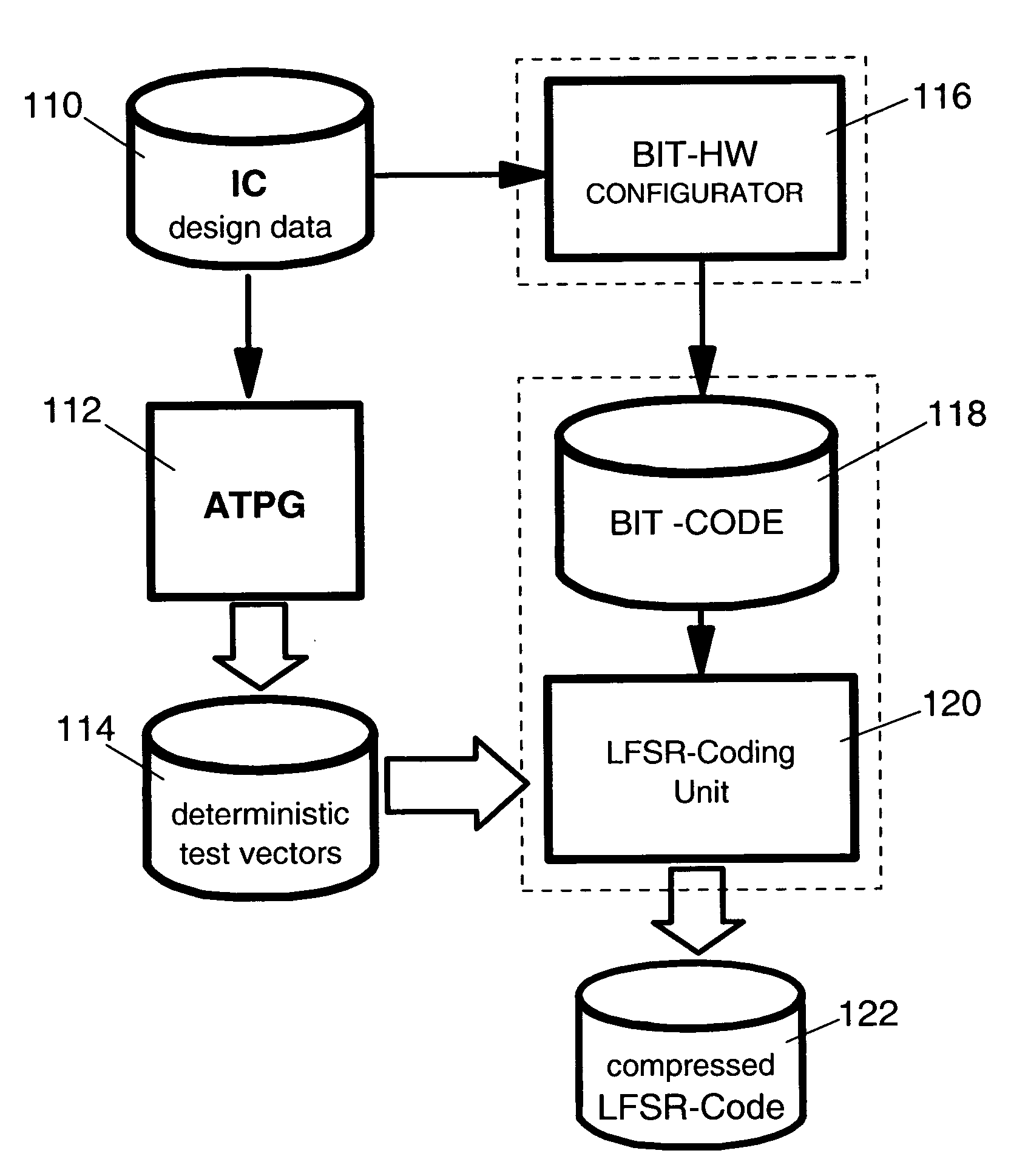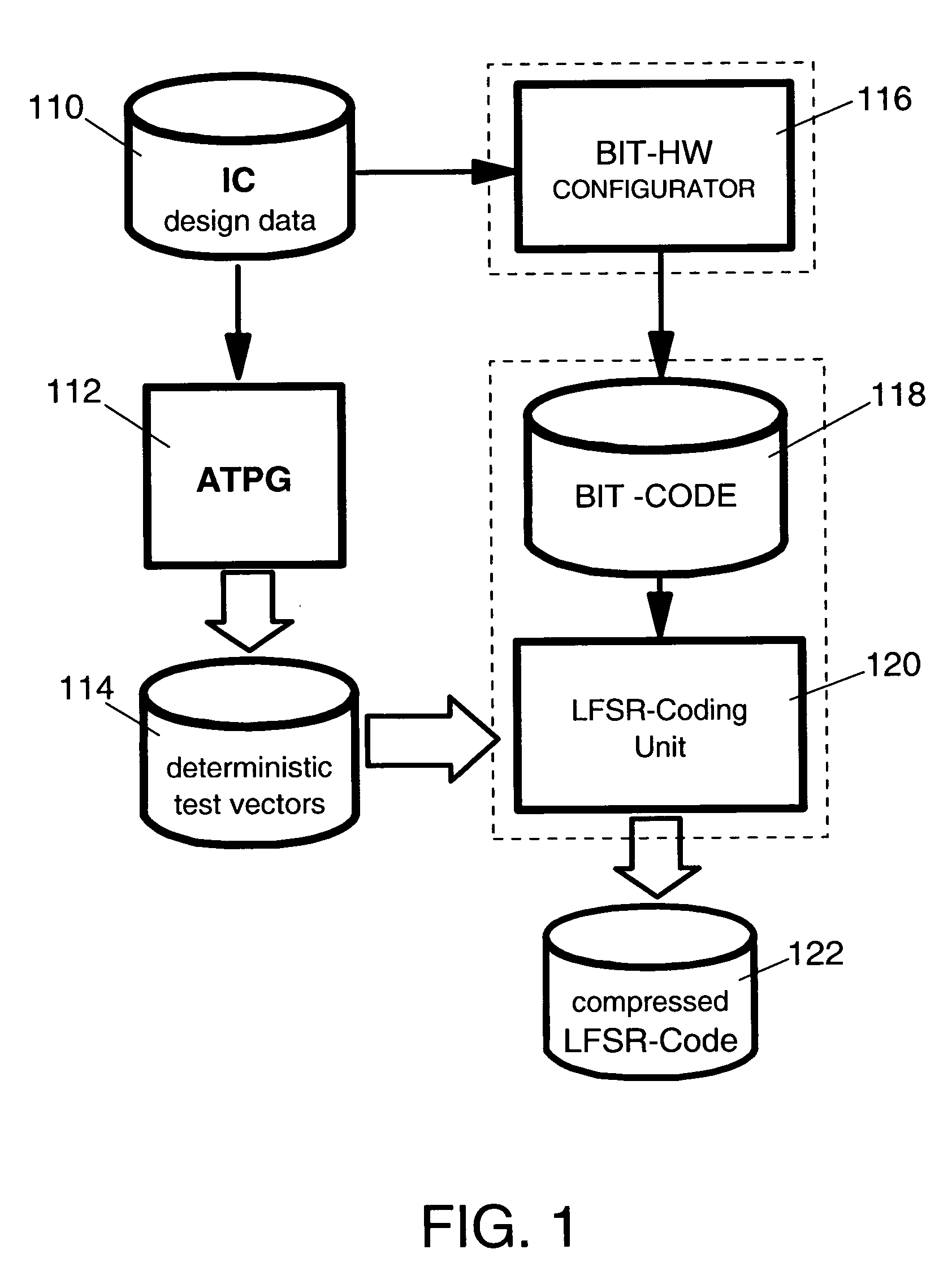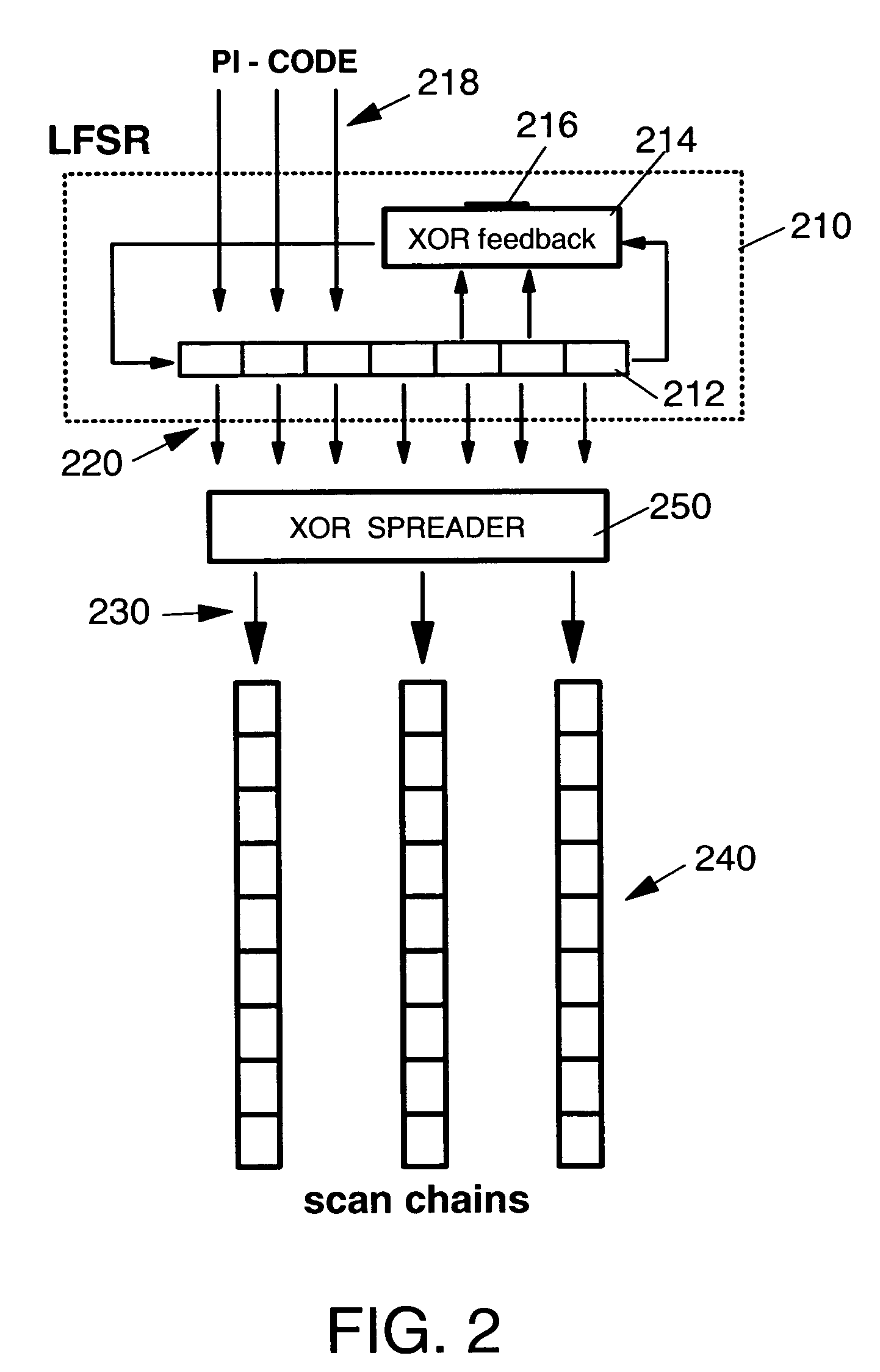Method and system for coding test pattern for scan design
a scan design and test pattern technology, applied in the field of integrated circuit testing, can solve the problems of low efficiency, inability to support lfsr-coding for such hardware structure, and large amount of memory required for explicitly storing deterministic test data, and achieve the effect of efficient coding test vectors
- Summary
- Abstract
- Description
- Claims
- Application Information
AI Technical Summary
Benefits of technology
Problems solved by technology
Method used
Image
Examples
Embodiment Construction
:
[0044]With reference now to FIG. 1, there is depicted a block diagram giving an overview of LFSR-Coding Procedure according to the present invention.
[0045]The flow on the left hand side includes block 110 illustrating a storage unit for keeping IC design data, an ATPG system (block 112) and a storage unit for keeping deterministic test vectors (block 114). These three blocks refer to common DSPT procedures.
[0046]The ATPG system (block 112) generates deterministic test vectors from IC design data (block 110). It should be noted that the resulting volume of test vectors (block 114) is extremely high for large ICs.
[0047]The flow on the right hand side includes a BIT-HW configurator (block 116), a storage unit for keeping BIT-Code (block 118), an LFSR-Coding Unit (block 120) and a storage unit for keeping compressed LFSR-Code (block 122). This flow refers to the LFSR-Coding procedure as introduced by this invention.
[0048]The outputs are compressed test vectors (LFSR-Code, block 122) to...
PUM
 Login to View More
Login to View More Abstract
Description
Claims
Application Information
 Login to View More
Login to View More - R&D
- Intellectual Property
- Life Sciences
- Materials
- Tech Scout
- Unparalleled Data Quality
- Higher Quality Content
- 60% Fewer Hallucinations
Browse by: Latest US Patents, China's latest patents, Technical Efficacy Thesaurus, Application Domain, Technology Topic, Popular Technical Reports.
© 2025 PatSnap. All rights reserved.Legal|Privacy policy|Modern Slavery Act Transparency Statement|Sitemap|About US| Contact US: help@patsnap.com



